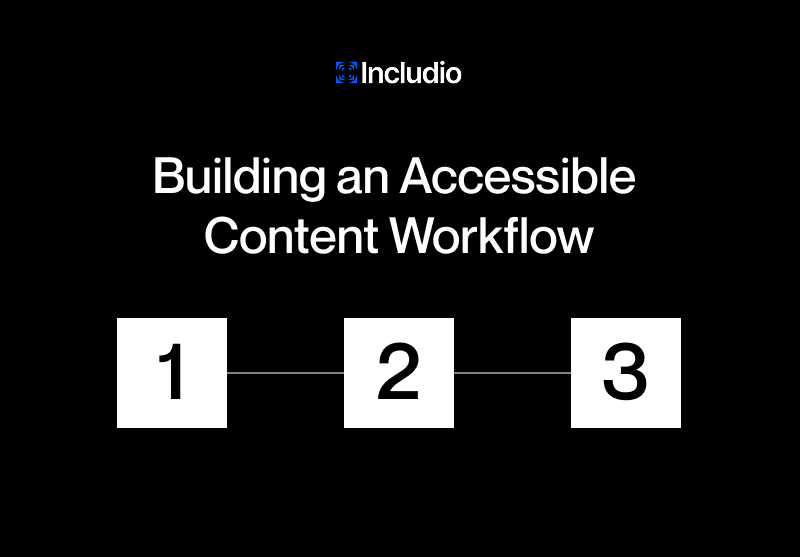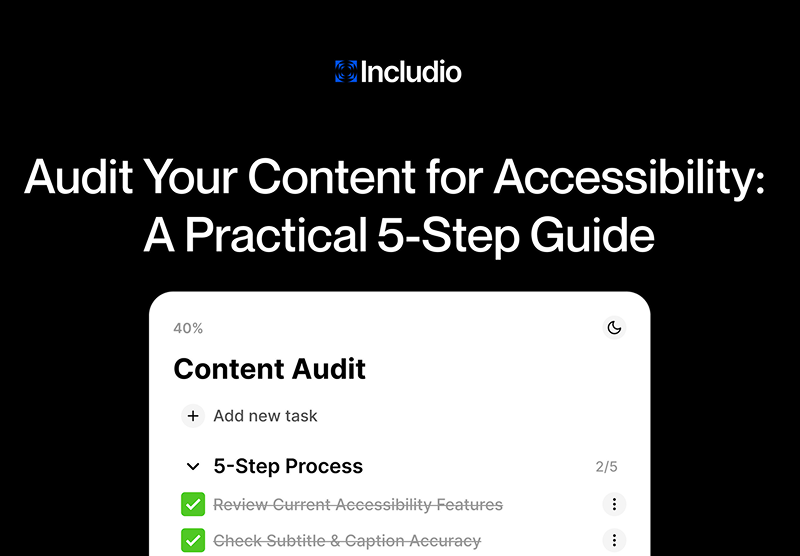
How Audio Description Transforms Storytelling
Storytelling is about emotion and connection. Audio Description (AD) brings that connection to life for millions who experience stories through sound. It links your creative intent to the audience’s imagination, making every film, series, and video feel whole. For producers and directors, AD is more than compliance. It’s a creative choice that improves how your story is told and how far it reaches. Sound carries meaning, and when you use it well, inclusion becomes part of your craft.
Seeing Through Sound: The Power of Audio Description
Audio Description (AD) gives every viewer equal access to your story. It translates visual detail into vivid, meaningful sound. For many audiences, it is the difference between watching a film and truly experiencing one. When you create audio description storytelling, you open your content to millions who rely on sound to follow emotion, pacing, and intent.
When done well, AD becomes part of your creative identity. It enhances narrative clarity, improves engagement, and deepens connection with your audience. You make your story more inclusive while keeping creative control. This is the core of inclusive media, ensuring every audience member experiences the same story, regardless of sight.
How Audio Description Enhances Storytelling
AD strengthens your film or series by translating visuals into purposeful language that blends naturally into the soundtrack. The describer’s goal is to preserve emotion, tone, and timing while delivering context that enriches your scene.
Effective audio description storytelling achieves three things:
● Clarifies Emotion: Listeners hear small cues, such as a hand tremor, a fading smile, or a door slowly closing, that shape meaning. These details bridge the emotional gap between the visual and auditory experience.
● Maintains Pacing: Good AD respects rhythm. It fits naturally within dialogue breaks, keeping the audience engaged without slowing the story.
● Builds Connection: When AD aligns with direction and performance, the story feels consistent and immersive. Listeners become part of the same cinematic experience.
Professional describers work closely with directors, editors, and sound engineers. They adapt tone and phrasing to reflect your creative intent. This ensures AD never feels added after the fact. It becomes part of your production’s storytelling foundation.
The Role of Expert Describers in Inclusive Media
In inclusive media, describers act as creative partners. They interpret your visual storytelling and convert it into precise language. Every word choice affects how your audience understands the scene. That responsibility demands skill, empathy, and cultural awareness.
Experienced AD writers:
● Analyze each frame for context and intent.
● Capture emotional nuance without unnecessary commentary.
● Collaborate with accessibility consultants and test audiences.
● Tailor vocabulary to genre and target market.
For example, describing a thriller scene requires concise, tense phrasing. A documentary may need factual, objective description. A romantic drama benefits from a softer tone and rhythm. Each type of production needs a distinct descriptive style to maintain authenticity.
By treating AD as creative writing rather than a checklist, you strengthen your production’s emotional impact. You create audio description storytelling that feels natural, intentional, and artistic.
Integrating AD into Accessible Film Production
Building AD into your accessible film production process from the start avoids last-minute fixes and rushed scripts. Too often, accessibility is added after post-production, which disrupts creative flow. Early integration preserves intent and ensures consistency across markets.
Practical steps to embed AD in your workflow:
- Start Early: Include accessibility goals in your project plan. Identify scenes that will need detailed description.
- Collaborate from Script Stage: Bring describers into early drafts. They can flag where visuals might need audio context.
- Use Shared Tools: Maintain collaborative scripts and time-coded files for editors, directors, and describers.
- Test with Real Users: Invite blind and partially sighted viewers to review AD tracks. Their feedback helps refine pacing and tone.
- Review and Approve: Have producers and directors review AD tracks before final mix to ensure consistency.
By following these steps, you build inclusive media that meets accessibility standards and improves the quality of your storytelling.
The Creative and Commercial Benefits of Audio Description
Audio description is more than a legal requirement. It is a creative opportunity that expands your audience, strengthens your storytelling, and builds trust with viewers. By embracing audio description, you make your content accessible to millions of new viewers while enhancing the artistic value of your work. It creates a richer, more engaging experience for everyone, improving both inclusivity and audience satisfaction.
● Audience Growth: More than 30 million people in Europe use AD or captions. Globally, that number exceeds 250 million. Each accessible film or series reaches new audiences.
● Retention: Accessible content often achieves up to 20 percent higher completion rates on streaming platforms.
● Efficiency: Productions that plan for accessibility early can reduce editing time by up to 40 percent.
● Brand Trust: Viewers respect creators who make accessibility a priority. Consistent AD builds loyalty and positive reputation.
Accessible storytelling is also a sound business strategy. Broadcasters and streamers must comply with the European Accessibility Act by 2025. By integrating accessible film production practices now, your team gains flexibility and stays ahead of deadlines.
Crafting Emotion Through Words
Strong AD captures emotion, not just action. The describer becomes the storyteller’s voice for those who experience your work through sound.
Consider how one phrase changes meaning:
● “She looks at him” compared to “She looks at him with sudden recognition.”
That single word, recognition, changes tone and adds weight. This is the essence of audio description storytelling. It is precise writing that transforms visuals into understanding.
Skilled describers practice this balance. They use restraint while keeping clarity. Their goal is to complement the director’s vision and enhance the listener’s experience.
Building Inclusive Media Across Formats
Audio description extends beyond film and television. It enhances trailers, promotional clips, and social media videos. Every format benefits from inclusive sound design. A short video with accurate AD can reach thousands who otherwise would skip it.
You can apply inclusive media principles to:
● Feature films and series.
● Educational and training videos.
● Event livestreams and public broadcasts.
● Museum exhibits and theater performances.
By making accessibility part of every format, you strengthen your creative brand and reach broader audiences.
The Human Impact of Accessible Film Production
Accessible storytelling makes a difference. For audiences with visual impairments, audio description storytelling offers inclusion and belonging. It lets them enjoy stories on equal terms and share cultural experiences.
A BBC study found that 90 percent of blind and partially sighted viewers who used AD said it improved their understanding of plot and character. Many said it increased enjoyment and encouraged repeat viewing.
For creators, this feedback is powerful. You are not only meeting a regulation. You are giving people the full story. Each accessible project builds connection and trust with your audience.
Why It Matters to You as a Storyteller
You tell stories that move people. Audio description storytelling helps your work reach everyone. It adds depth, precision, and authenticity. It protects your creative vision and shows commitment to inclusion.
When you integrate AD as part of your creative process, your storytelling gains focus. Every line, pause, and cue works together. Your film feels more complete and connected to all audiences.
Whether you produce films, documentaries, or live events, AD turns your creative intent into a shared experience. It is storytelling that speaks clearly and fully to every listener.
Learn More Today
Learn how our expert writers craft AD for your content through Includio’s proven process and international network of describers. Discover how professional collaboration brings sound, story, and accessibility together to create true inclusion.
Meta Description: Audio Description isn’t just compliance, it is storytelling through sound. Discover how expert describers bring emotion, clarity, and connection to every scene.




